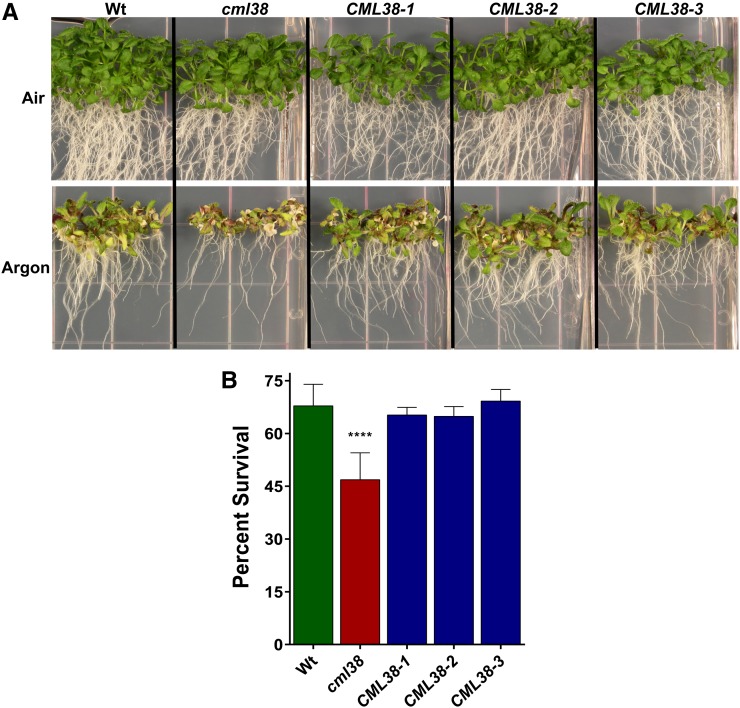Figure 2.
Effects of oxygen deprivation on the survival of cml38 T-DNA insertional mutant seedlings. A, Eight-day-old, vertically grown seedlings corresponding to the wild type (Wt), the cml38 T-DNA insertional mutant (cml38), and three independent 35S::CML38:YFP complemented lines (CML38) were subjected to a 15-h treatment of air or argon gas and allowed to recover as described in “Materials and Methods.” B, Histogram showing the percentage survival of wild-type, cml38, and CML38 seedlings in response to argon treatment. Error bars show the se of nine biological replicates for the wild type and the cml38 mutant and three biological replicates for CML38 complementation lines, with each replicate containing 25 to 40 seedlings. Asterisks indicate a significant paired Student’s t test value (P < 0.0001) between cml38 and wild-type or CML38 plants. A similar Student’s t test showed no significant difference between wild-type and CML38 plants.

